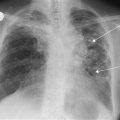Halitosis
Halitosis is a frequent or persistent unpleasant odour to the breath. It is usually due to poor dental hygiene. It may have a significant impact, both personally and socially, on those who suffer from it. Rarely, it may be the symptom of a serious underlying condition.
History
History of toothache, poor diet, smoking, alcohol. Painful gums, bleeding from gums. Acute necrotising ulcerative gingivitis (Vincent’s angina) is rare but presents with swollen gums with small ulcers, which may spread to the buccal mucosa and the patient will complain of bleeding from the gums, together with a constitutional upset with fever and malaise. Heartburn (GORD), dysphagia (pharyngeal pouch): dysphagia may occur due to a pharyngeal pouch pressing on the oesophagus. It may gurgle on palpation and regurgitation of food may occur on lying down, with subsequent development of aspiration pneumonia. Sinusitis may present with a nasal discharge and facial pain over the sinus. Cough, sputum and recurrent chest infections may indicate bronchiectasis. Dry mouth may be a part of prolonged starvation with chronic or acute illness or disease of the salivary glands, e.g. Sjögren’s syndrome. There may be a history of diabetes, renal failure or liver failure. Is the halitosis worse in the morning and gets better during the day? Is the patient otherwise well?
Examination
A worse odour through the mouth suggests an oral aetiology. A worse odour through the nose suggests either sinusitis or a foreign body. Nasal odours are usually more pungent than oral odours. The tongue may be coated, especially the posterior one-third. Check for gingivitis, periodontal disease and dental abscess. Gingivitis presents with red swollen and bleeding gums. In acute necrotising ulcerative gingivitis, in addition to the swollen, bleeding gums, there may be yellowish ulcers, which may also be seen on the buccal mucosa and occasionally on the tonsils. There is usually tender lymphadenopathy. Examine the salivary glands. Carry out a full examination of the oral cavity. Ulcers with hard everted edges, which bleed on contact are likely to be neoplastic. Look for signs of liver failure.
General Investigations
Specific Investigations
■ Antinuclear antibodies
Sjögren’s syndrome
■ Rheumatoid factor
May be positive in Sjögren’s syndrome.
■ Skull X-ray
Sinusitis – sinus opacity.
■ Barium swallow
Pharyngeal pouch.
■ Laryngoscopy
Nasopharyngeal carcinoma.
■ Biopsy
Benign versus malignant.
■ CT
Nasopharyngeal carcinoma. Carcinoma of the maxillary antrum. Assess extent of disease.




